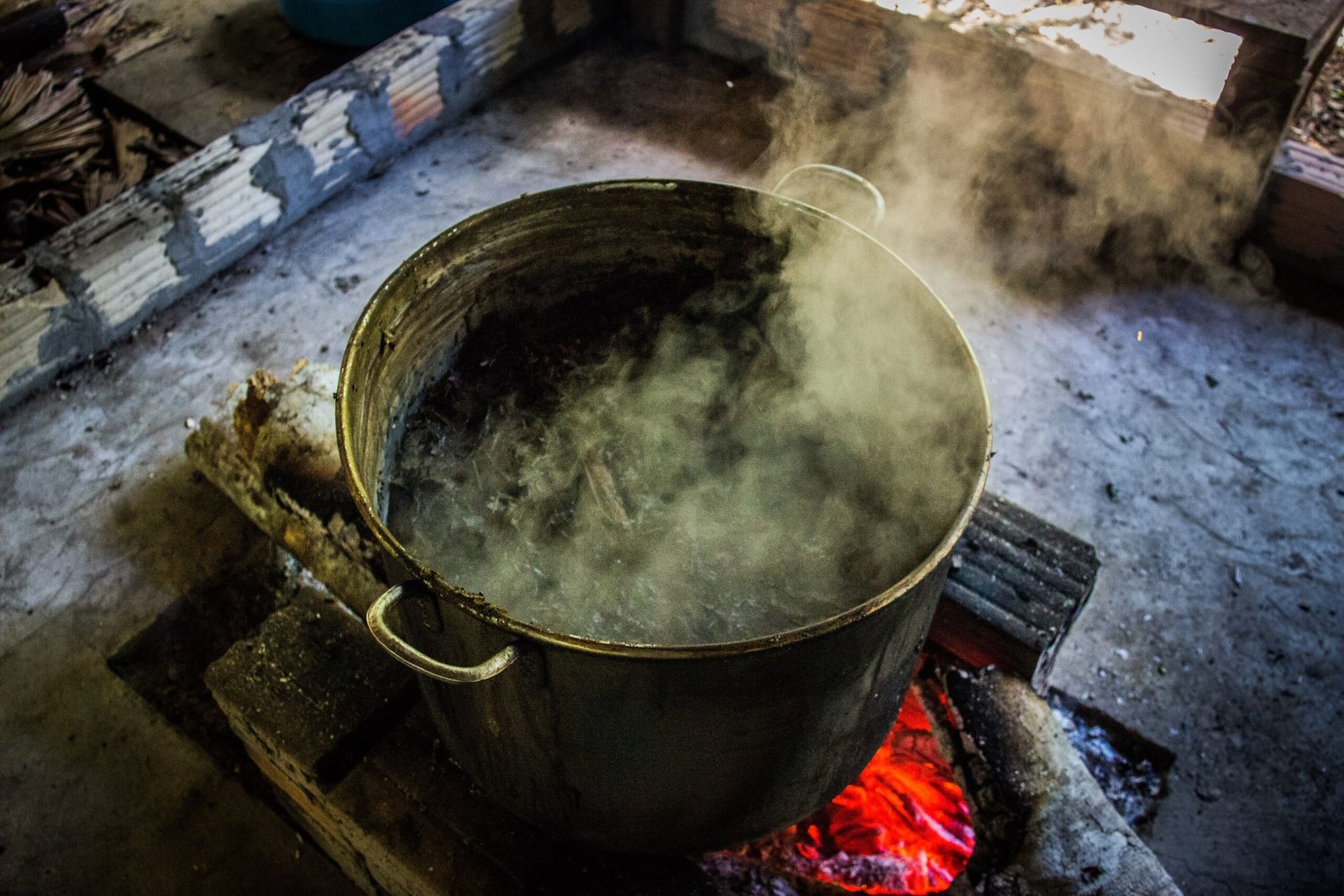In the heart of the Amazon rainforest, among the dense canopy and vibrant wildlife, lies a profound secret that has been guarded by indigenous tribes for centuries—ayahuasca. This potent brew, a combination of various plants, has traditionally been used in spiritual and healing ceremonies. Today, scientists are turning their attention to this ancient concoction, exploring its potential to alleviate modern mental health challenges such as depression and PTSD. As the world grapples with rising mental health issues, the journey of ayahuasca from the depths of the jungle to the sterile environment of the laboratory is not only fascinating but also offers hope for new treatment avenues.
The Ancient Roots of Ayahuasca

Ayahuasca, often referred to as the “vine of the soul,” has a rich history deeply embedded in the cultures of Amazonian tribes. For generations, shamans have brewed this sacred tea to connect with spiritual realms, seeking guidance and healing. The preparation involves combining the Banisteriopsis caapi vine with the leaves of the Psychotria viridis shrub, creating a powerful psychoactive beverage. Indigenous communities believe that ayahuasca possesses profound healing properties, capable of addressing both physical and psychological ailments. This traditional knowledge, passed down through generations, forms the foundation of the current scientific interest in ayahuasca’s potential therapeutic benefits.
Unveiling the Science Behind Ayahuasca
At the core of ayahuasca’s psychoactive effects is DMT (dimethyltryptamine), a powerful hallucinogenic compound. When combined with monoamine oxidase inhibitors (MAOIs) found in the Banisteriopsis caapi vine, DMT becomes orally active, allowing users to experience intense visions and altered states of consciousness. Scientists are particularly intrigued by the way ayahuasca interacts with serotonin receptors in the brain, which are closely linked to mood regulation. This interaction is believed to be a key factor in its potential to alleviate symptoms of depression and PTSD. By understanding the biochemical pathways involved, researchers hope to unlock new therapeutic possibilities.
Exploring Ayahuasca’s Potential for Depression
Depression is a pervasive mental health disorder affecting millions worldwide. Traditional treatments, such as antidepressants, may not work for everyone and often come with unwanted side effects. Ayahuasca offers a promising alternative. Preliminary studies suggest that ayahuasca can produce rapid and sustained antidepressant effects, even in individuals resistant to conventional treatments. Participants in these studies report experiencing profound emotional and psychological insights, often leading to a reduction in depressive symptoms. This has sparked hope among researchers and patients alike, as ayahuasca could potentially revolutionize the treatment landscape for depression.
Ayahuasca and PTSD: A New Hope
Post-Traumatic Stress Disorder (PTSD) is a debilitating condition that can arise after exposure to traumatic events. Conventional therapies, such as cognitive-behavioral therapy and medication, do not always provide relief. Ayahuasca presents a novel approach, with studies indicating that it may help individuals process and integrate traumatic memories. The brew’s ability to induce altered states of consciousness allows users to confront their traumas in a safe and controlled environment, often resulting in emotional release and healing. With the potential to address the root causes of PTSD, ayahuasca offers a new hope for those struggling with this challenging disorder.
Clinical Trials and Scientific Studies

The transition of ayahuasca from traditional use to scientific research has been marked by a growing number of clinical trials and studies. Researchers are meticulously documenting the effects of ayahuasca on mental health conditions, employing rigorous methodologies to ensure safety and efficacy. These studies often involve controlled settings where participants are monitored closely, ensuring an ethical approach to exploring ayahuasca’s potential. The results, although preliminary, have been promising, leading to increased interest and funding for further research. As the scientific community continues to explore this ancient remedy, the hope is to develop evidence-based treatments that can be integrated into modern medicine.
Challenges and Controversies

Despite the promising potential of ayahuasca, its journey into the realm of modern medicine is not without challenges. Legal restrictions, ethical concerns, and the risk of misuse pose significant hurdles. Ayahuasca is currently classified as a Schedule I substance in many countries, complicating research efforts. Additionally, the cultural significance of ayahuasca raises ethical questions about its commercialization and the potential exploitation of indigenous knowledge. Balancing scientific exploration with respect for traditional practices is crucial to ensuring that the benefits of ayahuasca can be shared ethically and responsibly.
The Role of Set and Setting

One of the unique aspects of ayahuasca is the importance of set and setting in its administration. The experience is highly influenced by the user’s mental state and the environment in which the ceremony takes place. Indigenous shamans emphasize creating a safe and supportive space, often using music and rituals to guide participants. This holistic approach is believed to enhance the healing process, allowing individuals to navigate their inner landscapes with greater clarity and insight. As researchers explore ayahuasca’s therapeutic potential, understanding the significance of set and setting will be crucial in optimizing its benefits.
Voices from the Field: Personal Experiences
Personal testimonies from those who have participated in ayahuasca ceremonies provide valuable insights into its potential impact. Many individuals describe life-changing experiences, characterized by emotional release, spiritual awakening, and profound healing. These stories, while anecdotal, highlight the transformative power of ayahuasca and its ability to catalyze personal growth. For individuals suffering from depression or PTSD, such experiences offer a glimmer of hope, inspiring further exploration and research. As more voices from the field emerge, they contribute to a growing body of evidence supporting ayahuasca’s therapeutic potential.
The Future of Ayahuasca in Medicine

As research into ayahuasca continues to evolve, its potential role in modern medicine becomes increasingly apparent. Scientists are exploring ways to isolate the active compounds within ayahuasca, aiming to develop targeted treatments that retain its therapeutic benefits while minimizing risks. Collaboration between researchers, indigenous communities, and policymakers will be essential in shaping the future of ayahuasca in medicine. By bridging traditional knowledge with scientific innovation, there is a possibility of creating a new paradigm in mental health treatment, offering hope and healing to individuals worldwide.




